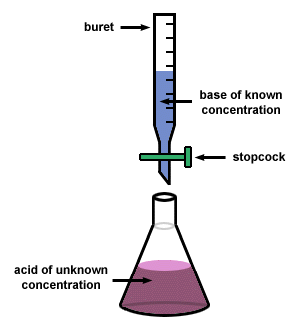I. Dissociation
A. Ionic compounds are made up of 2 parts
a. Cation: positively charged particle
b. Anion: negatively charged particle
B. When ionic compounds are dissolved in water the cation and anion separate from each other. This process is called dissociation
C. When writing dissociation equation the atoms and charges must balance
a. The dissociation of sodium chloride is:
NaCl ---> Na+ + Cl-
Ex. Complete the following dissociations
1. Fe(OH)2 ---> Fe2+ + 2OH-
2. Na3PO4 ---> 3Na+ + PO43-
3. Fe3(PO4)2 ---> 3Fe2+ + 2PO43-
D. If the volume does not change then the concentration of individual ions depends on the balanced coefficients in the dissociation equation
Ex. Determine the [Na+] and [PO43-] in a 1.5M solution on Na3PO4
Na3PO4 --> 3Na+ + PO43-
1.5M x (1/1) = 1.5M [PO43-]
1.5M x (3/1) = 4.5M [Na+]
Ex. Determine both ion concentrations when a 2.5M solution of Lithium sulphate dissociates.
Li2SO4 ---> 2Li+ + SO42-
2.5M x (2/1) = 5.0M [Li-]
2.5M x (1/1) = 2.5M [SO42-]
